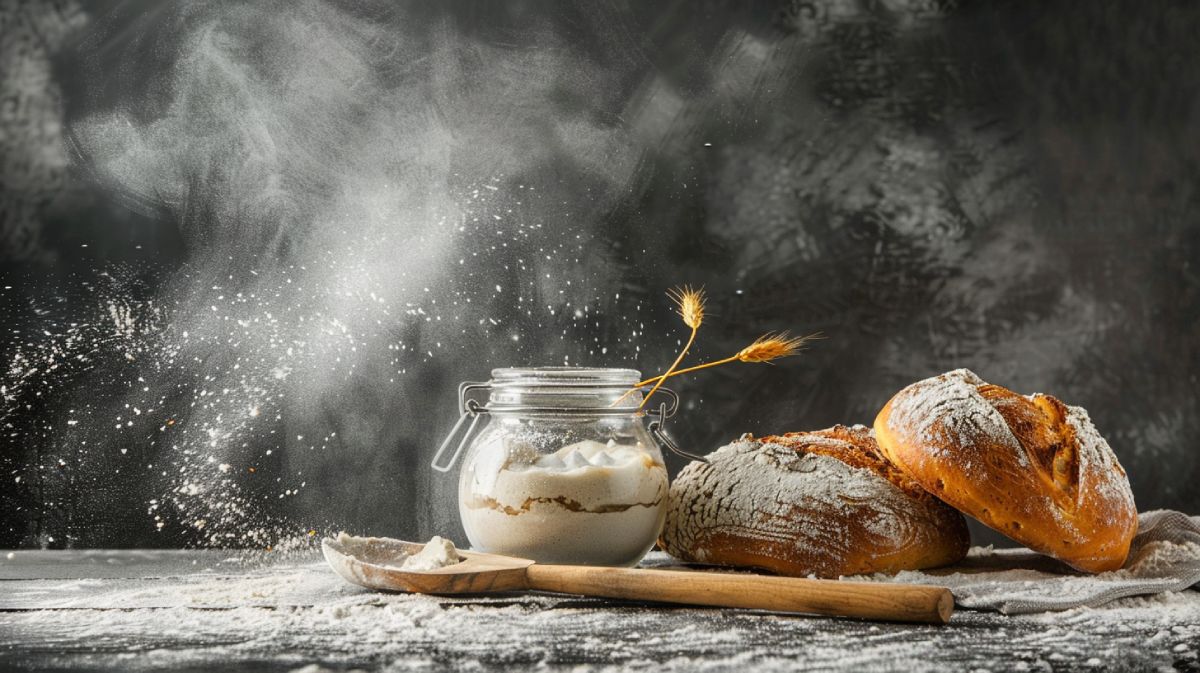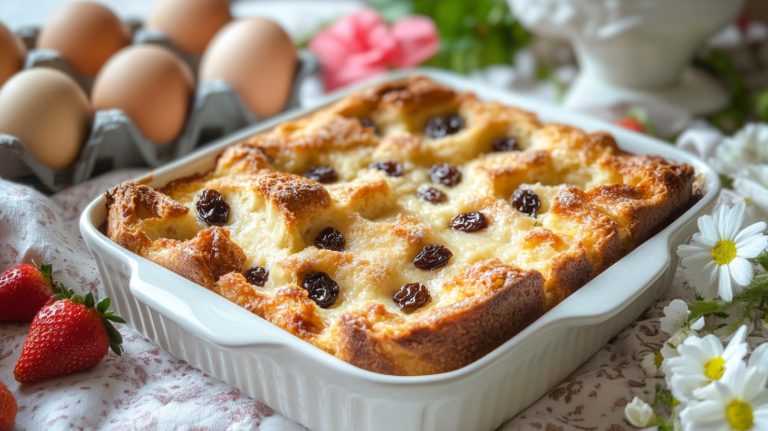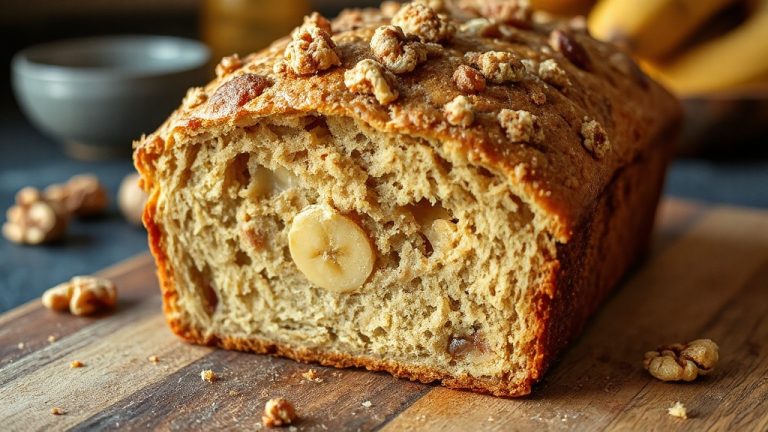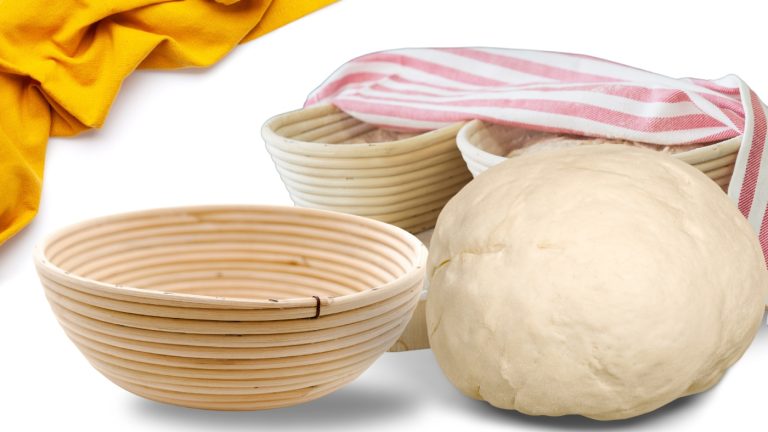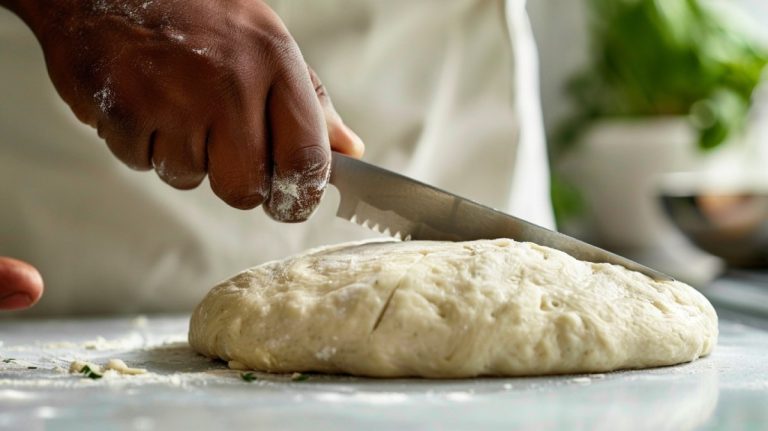How to Make Sourdough Bread More Sour: Unlock the Tang
To make your sourdough bread more sour, extend your bulk fermentation to 6-7 hours and add whole grain flours like whole wheat or dark rye. Acetic acid-producing bacteria grow faster this way, so the taste is tangier.
You can also use cold fermentation by refrigerating your dough for up to 72 hours. Reduce the frequency of feeding your sourdough starter to increase acetic acid levels. Using your starter right after peak activity helps boost the lactic acid bacteria.
By following these methods, you can enhance the sourness of your bread and learn new tricks.
Key Takeaways
- Use whole grain flours like whole wheat or dark rye to promote acetic acid-producing bacteria growth.
- Extend bulk fermentation to 6-7 hours at cooler temperatures for enhanced sourness.
- Refrigerate dough for cold fermentation, allowing up to 72 hours for increased acid interaction.
- Feed your sourdough starter less frequently to boost acetic acid levels in the bread.
Sourdough Sourness Explained
Sourdough sourness primarily comes from lactic and acetic acids produced during fermentation, with acetic acid delivering a sharper tang that enhances the overall flavor profile. The balance between these acids is essential; increasing acetic acid results in a more pronounced sourness.
The fermentation process involves complex interactions between bacteria in your sourdough starter, which influence the type and amount of acids produced.
Utilizing whole grain flours can be particularly effective, as they promote the growth of acetic acid-producing bacteria, thereby intensifying the sourness in your final bread.
Additionally, environmental factors, like ambient temperature and humidity, play a significant role in the sourness development of your sourdough.
Cold fermentation is another key technique; longer fermentation times allow for extended interaction between the dough and the acids, enhancing the overall flavor complexity.
Techniques to Enhance Sourness
Experiment with techniques such as incorporating whole grain flours and extending fermentation times to achieve a more pronounced sourness in your bread. Whole grain flours, like whole wheat or dark rye, promote the growth of acetic acid-producing bacteria, essential for enhancing the sour profile of your bread.
Extending bulk fermentation times to 6-7 hours at lower temperatures encourages the development of acetic acid, resulting in a more pronounced sour flavor. Additionally, consider utilizing cold fermentation by refrigerating your dough for up to 72 hours. This method allows the sourness to develop gradually, improving flavor complexity.
Another effective approach is to feed your sourdough starter less frequently. Infrequent feedings increase acetic acid levels, leading to a tangy sourdough that many bakers desire. Use your starter to introduce more lactic acid bacteria into the dough after it has peaked in activity, contributing to a complex flavor profile.
Maintaining Your Sourdough Starter
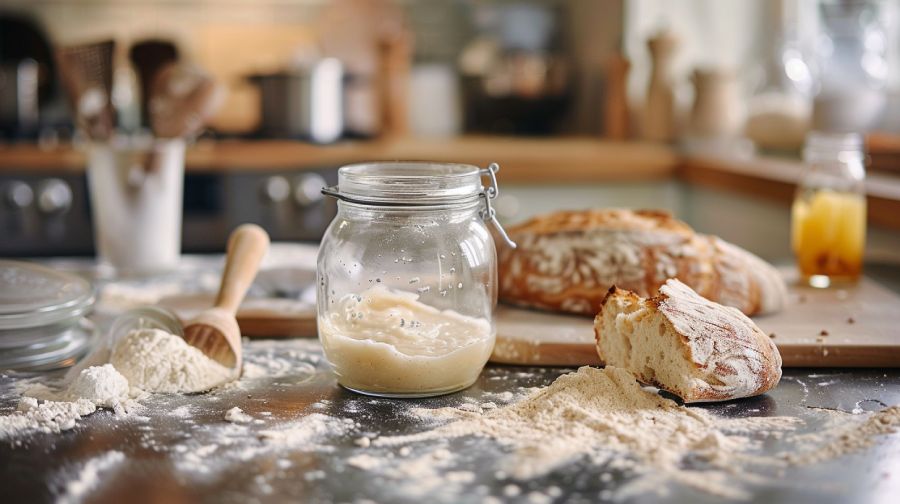
Properly maintaining your sourdough starter is vital for guaranteeing it remains healthy and capable of producing the tangy flavor you desire in your bread. Establishing a consistent feeding routine is important; feeding your starter twice daily at room temperature or weekly in the fridge helps stabilize its microbial balance. This balance is key to promoting ideal sourness.
To enhance flavor complexity and support the growth of lactic acid bacteria (LAB), consider using organic rye or whole grain flours for feeding. These flours offer more nutrients, encouraging a robust starter that can produce a more sour profile. Be vigilant for signs of distress in your starter, such as sluggish rise or off-putting odors, which indicate potential fermentation issues that could compromise sourness.
Adjust your feeding frequency if you want to amplify the sourness in your bread. Using a less ripe starter can encourage acetic acid production, contributing to a tangier flavor.
Factors Influencing Flavor Complexity
Understanding how various factors influence flavor complexity is essential for achieving the desired sourness in your bread.
The balance between lactic acid and acetic acid is vital; acetic acid delivers a sharper sourness, while lactic acid contributes milder, tangy notes. You can manipulate this balance by adjusting ambient temperature during fermentation. Lower temperatures encourage acetic acid production, producing a more intense sour flavor.
Incorporating whole grain flours like whole wheat or dark rye can also enhance your bread’s sourness, as these flours promote the growth of acetic acid-producing bacteria.
The microbial composition of your sourdough starter plays a significant role, too; a mature, vigorous starter tends to yield more complex flavors due to higher acid production.
Experimenting With Baking Methods
Adjusting your baking methods can greatly impact the sourness of your sourdough bread, allowing for greater control over flavor development through techniques like extended fermentation and temperature manipulation.
Start by extending the bulk fermentation time to 6-7 hours at lower temperatures. This promotes acetic acid development, enhancing the sour flavor of your loaf.
It would be best to experiment with cold fermentation, placing your shaped dough in the refrigerator for 24 to 48 hours. This technique allows the bacteria in your sourdough starter to produce more acids, intensifying the sourness.
Additionally, consider using a sourdough starter that’s been fed less frequently. This produces higher acetic acid, giving your bread a more pronounced sour flavor.
Incorporating whole-grain flour, such as whole wheat or dark rye, encourages acetic acid-producing bacteria and further enhances sourness.
Finally, don’t overlook the potential of hooch—the liquid on your neglected starter. Stirring it back into the dough can greatly boost sour flavor due to its concentrated acidity.
Frequently Asked Questions
How Do I Make My Sourdough Taste More Sour?
To make your sourdough taste more sour, try using whole grain flour, extend bulk fermentation, refrigerate shaped dough, feed your starter less often, and use it just past peak activity for enhanced flavor.
Why Does My Sourdough Bread Not Taste Sour?
If your sourdough’s not tasting sour, it could be that you’re using a too-fresh starter or fermenting it for too short a time. Consider adjusting these factors for a more pronounced tang in your bread.
What Ingredient Makes Sourdough Bread Sour?
The natural fermentation process involving lactic and acetic acid bacteria is the primary ingredient that makes sourdough bread sour. These microorganisms produce acids during fermentation, contributing to sourdough’s distinct tangy flavor.
What Is the Secret Behind the Sour of Sourdough Bread?
The secret behind sourdough’s sourness lies in lactic and acetic acids produced during fermentation. Longer fermentation times and whole grain flours enhance these acids, creating a more complex and tangy flavor profile in your bread.
Transforming Your Sourdough: The Art of Achieving Tangy Perfection
To truly transform your sourdough into a tangy treasure, embrace experimentation and embrace time.
By tweaking your fermentation techniques, nurturing your starter, and exploring environmental factors, you can elevate sourness to sublime levels.
Each loaf becomes a labor of love, revealing rich, robust flavors that delight the palate.
So, immerse yourself in the delightful dance of sourdough baking, and savor the satisfying satisfaction of crafting a perfectly puckering bread that’s bound to impress.

